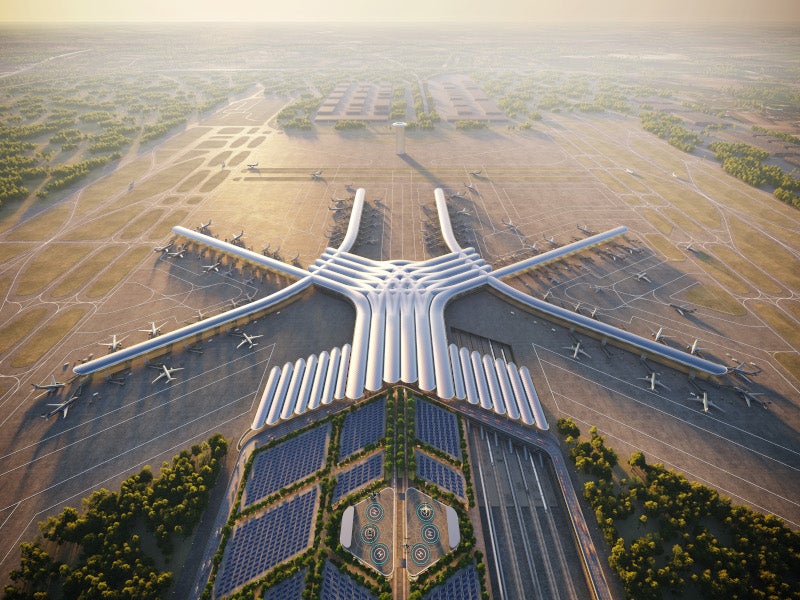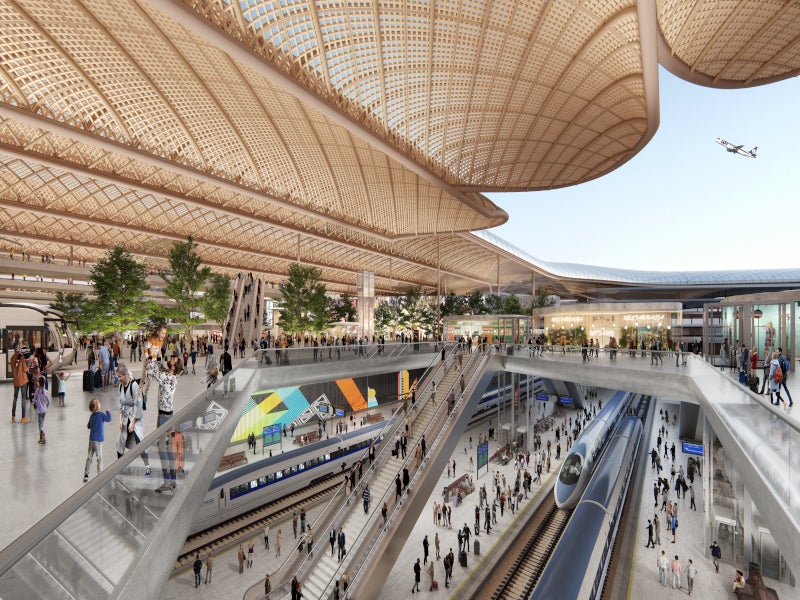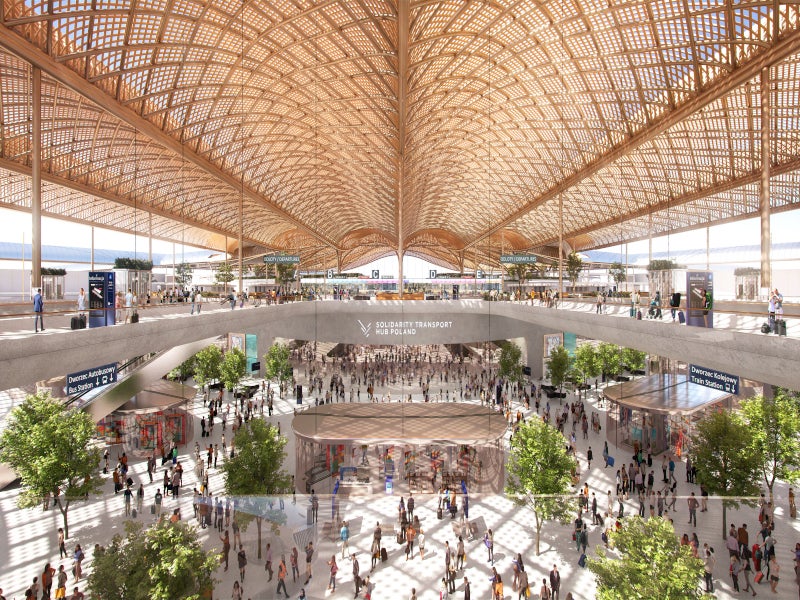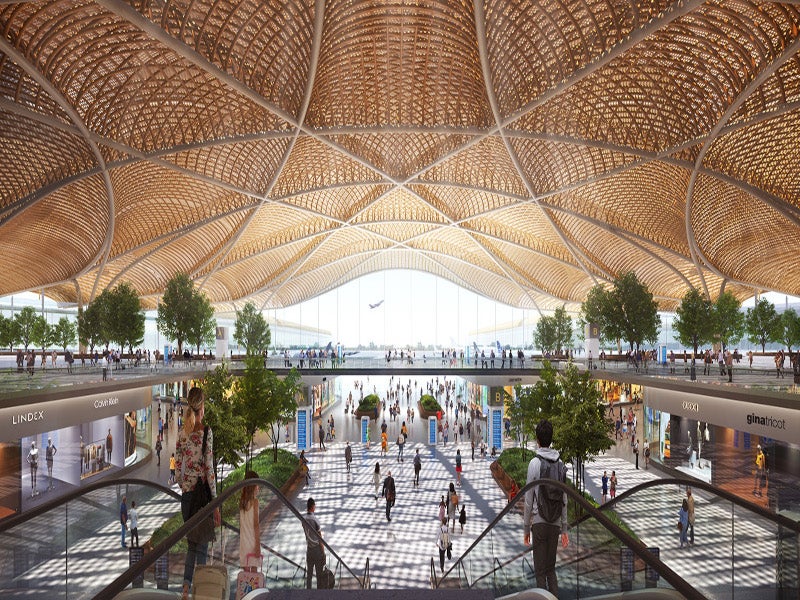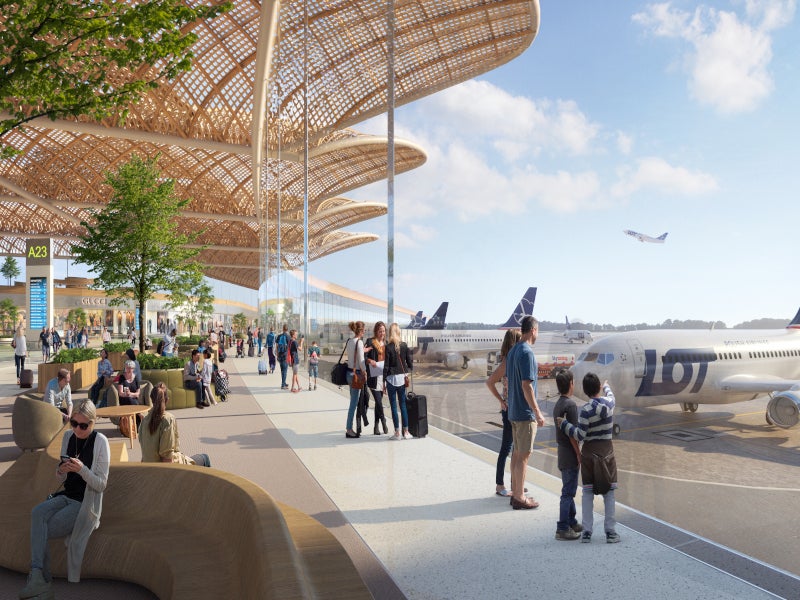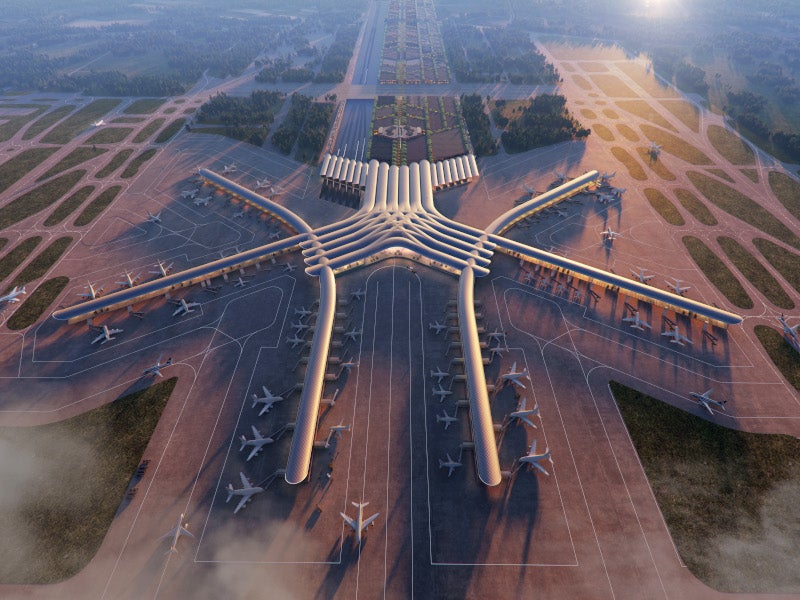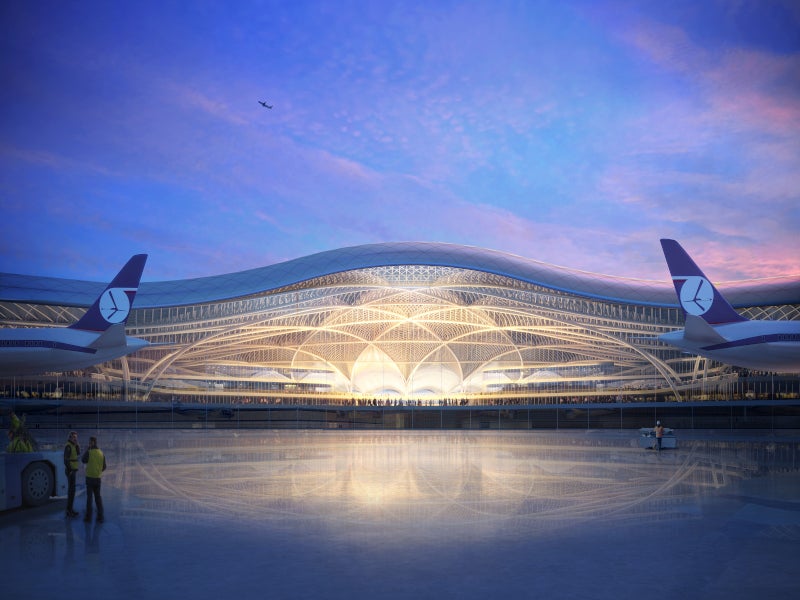Solidarity Transport Hub (STH) is a new greenfield airport being developed by the Polish state company Centralny Port Komunikacyjny (CPK) in Warsaw, Poland.
Expected to open in 2028, the project will integrate air, rail, and road transport. It is expected to initially handle 40 million passengers a year.
Proposed to be developed as a dual-use airport for civil and military purposes, the new central airport is expected to play a significant role in the security of Poland, as well as Central and Eastern Europe.
It could be used by transport aircraft carrying military troops and combat equipment to defend Poland or the Baltic nations in the event of aggression by adversaries.
In June 2024, Polish Prime Minister Donald Tusk confirmed the government’s plans to move forward with the previous administration’s plans to construct the CPK airport, but with modifications.
Solidarity Transport Hub airport location
The STH is situated between Warsaw and Lodz, near the A2 motorway.
The planned Polish airport is being built on approximately 37km² (10,131 acres) of land in the municipalities of Baranow, Teresin, and Wiskitki, which are located 37km west of Warsaw.
The project will also involve the construction of more than 1,600km of new railway lines, which are expected to allow passengers to reach Warsaw from STH within 15 minutes.
Solidarity Transport Hub Airport project development
A total of nine architectural companies submitted preliminary designs for the project as part of two design competitions held in 2019. The companies included Chapman Taylor, Foster+Partners, Grimshaw Architects, Zaha Hadid Architects, Benoy, Pascall+Watson, Woods Bagot, Populous, and KPF. These design concepts inspired the airport’s masterplan.
In January 2023, CPK began a preliminary market consultation (PMC) to evaluate market potential, estimate interest in work orders, and compile best practices for carrying out construction works.
To design the air traffic control tower, operations centre, and base for aircraft maintenance, CPK signed a framework agreement with 13 contractors.
With the signing of agreements with four design firms and collaborations, CPK transitioned from the planning phase to the design phase in 2022.
In 2022, eight contractors, including Budimex, Doraco, Mostostal Warszawa, NDI, Polimex Infrastructure, PORR, Strabag, and Trakcja, signed a framework agreement with CPK to carry out preliminary construction works in 2023. These works included cutting trees, levelling the ground, building temporary buildings, and other tasks.
Details of STH airport
The new Solidarity Transport Hub airport will be integrated with all types of ground transport, including an interchange rail station.
Airside infrastructure will include runways, taxiways, runway entry, air traffic control tower and navigation, aprons, an apron for helicopter emergency medical services, and de-icing pads.
Landside infrastructure will include a passenger terminal, a general aviation terminal, a cargo terminal, forecourts, parking spaces, and a public transport interchange.
Support infrastructure will include rescue and firefighting service facilities, aircraft maintenance, repair and overhaul, airport and ground support equipment (GSE) maintenance, and de-icing support facilities.
The project will also create additional infrastructure, including a railroad integrated with the national system, road connections to the public road network, and connections for power, gas, and sewage, as well as military infrastructure.
The new railway connections will enable passengers to commute between Warsaw and other large Polish cities in less than 2.5 hours.
The STH project is estimated to create more than 150,000 jobs.
Financing details for the STH project
Poland and South Korea signed a memorandum of understanding (MOU) in December 2021 to cooperate on the STH.
The MOU outlines steps for joint financing and the creation of a joint venture. It is expected to provide Incheon International Airport Corporation (IIAC), which is the operator of Incheon Airport in South Korea, with a minority stake in the project.
In 2021, the European Commission (EC) agreed to provide 108m zloty ($25.2m) in co-financing for the building permit design of a tunnel for the high-speed railway component of the transport hub in Lodz. The funding will also be used for preparatory works to build a railway line between Warsaw, Sieradz, and Poznan.
The Solidarity Airport was added to the EU’s investment priorities the same year.
Partnerships to support the hub
AGH University of Science and Technology signed a cooperation agreement with STH to conduct research supporting the project’s development.
STH also agreed to cooperate with the Warsaw University of Technology and the Lukasiewicz Research Network on the project.
Poland and the UK signed a cooperation agreement in May 2020 to garner support for the project. Poland is expected to leverage the experience and expertise offered by the British aviation sector in planning, designing, and building the Solidarity Airport and the new railway lines.
Contractors involved
Arup Polska, a subsidiary of the professional services provider Arup, was selected to conduct the pre-construction environmental survey for the project.
Netherlands Airport Consultants (NACO), a Dutch airport consultancy, was selected to prepare the master plan for the project in July 2021. The master plan included details such as a general plan by aviation laws, specialised analyses, and pre-design documentation.
Multiconsult Polska was selected to provide technical support for the spatial survey and ground study for the master plan and pre-design documentation of the project in January 2021.
The contractual scope includes obtaining terrain data in the areas of geology, geodesy, geophysics, archaeology, and environment.
Bird & Bird, a UK-based international law firm, received a contract in May 2020 to provide advice on the selection of key consultants for the project.
Law firms IIAC and CMS were selected as the strategic advisers for the project.
In November 2022, CPK chose Foster+Partners and Buro Happold as master architects to design the project.
Dar Al-Handasah Consultants, a consulting company, was responsible for creating the design documentation for the runways, taxiways, and aprons.
Spanish consulting company IDOM was appointed as the designer of airport systems integration.
In April 2023, CPK and Traktz Katowic, a design company, entered a contract to design a road network around the airport, including access to National Route 50 and an intersection with the A2. A geological assessment was conducted to create comprehensive design plans and specifications.
CPK awarded a contract worth 4.7m zloty ($1.23m) to a consortium, including architecture companies PIG Architekci and GMT to design the airport’s operations control centre.
A 15.5m zloty ($4.05m) contract for designing the air traffic control tower was awarded to architecture company JSK Architekci.
The design of the emergency and firefighting services buildings is being undertaken by a consortium comprising AKE Studio, APA, and Tequm, under a contract worth 6.6m zloty ($1.72m).

